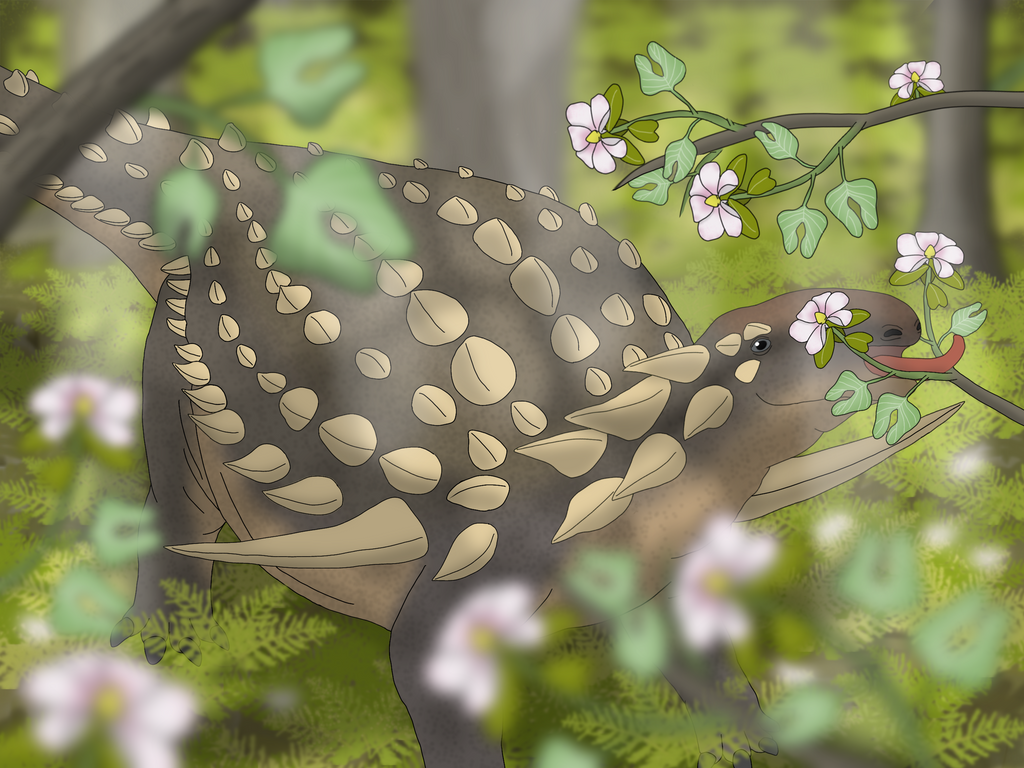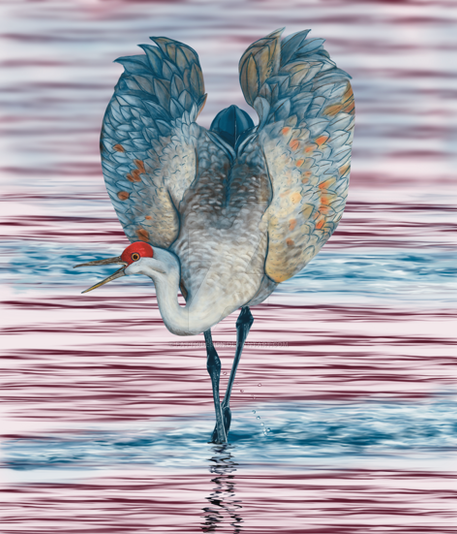HOME | DD
 Olmagon — Flower Feast
Olmagon — Flower Feast

#archaeanthus #angiosperm #ankylosaur #appalachia #blooming #blossom #cretaceous #digitalart #digitaldrawing #digitalpainting #dinosaur #fern #flower #forest #magnolia #mesozoic #paleoart #paleontology #plant #plants #ankylosaurs #floweringplant #paleobotany #nodosaur #thyreophoran #nodosauridae #paleoillustration #silvisaurus #ankylosaurweek #ankylosauraugust
Published: 2021-08-29 00:33:46 +0000 UTC; Views: 11521; Favourites: 145; Downloads: 3
Redirect to original
Description
Treading through a forest in what is now the eastern part of the USA, but part of the continent of Appalachia 95 million years ago during the middle Cretaceous period, a bulky armored dinosaur is guided by its sense of smell towards a seasonal banquet. This adult Silvisaurus condrayi is a rather large, 4-meter herbivore that feeds on a variety of plants and could eat the many ferns growing on the forest floor, but it smells that there is something else available at the moment. It arrives near a blooming Archaeanthus linnenbergeri tree, an early flowering plant similar to the magnolias of our time, and luckily for the dinosaur some if the flowers are blooming low enough for it to reach with its strong, prehensile tongue.Another Ankylosaur Week drawing (youtu.be/vYGxpJ6svdI ). A medium-sized member of the Nodosauridae family of ankylosaurs, Silvisaurus is known from a partial skeleton preserving the front part of the animal, but it is in rather poor condition since it was exposed at the bottom of a dry riverbed where it was trampled on by herds of cattle. This specimen was found in Kansas in the Dakota Formation, a very widespread formation that stretches from Alberta and British Columbia in Canada all the way down south to Utah and Kansas, and dates to the middle Cretaceous period. During the Cretaceous, the North American continent was split right across the middle by an inland sea known as the Western Interior Seaway stretching north to south that split North America into two smaller continents, Laramidia in the west and Appalachia in the East. The Dakota Formation would have been part of the Seaway, so the specimen of Silvisaurus was found in marine strata and most likely fell into a river where the body got swept into the ocean, most likely from Appalachia since Kansas was around the Appalachian shore. While Laramidia has yielded abundant fossil remains from the Mesozoic, with many late Cretaceous formations across the west of North America giving a good idea of what ecosystems were like there, Appalachia has had a rather poor Mesozoic fossil record, yielding much fewer dinosaurs and the few it has are mostly fragmentary remains like isolated teeth, with Silvisaurus being a rather complete specimen by Appalachian standards despite missing the entire back half of the body. From what remains of it, we can tell Silvisaurus was a nodosaurid that probably grew 4 meters long and like other ankylosaurs it had many bony osteoderms across its back for defence from predators, which on Appalachia would probably mainly be Dryptosaurids, a family of tyrannosauroids exclusive to Appalachia that evolved separately from the Tyrannosaurids in Laramidia. Studies on the tongue bones of Pinacosaurus, an Asiam ankylosaur, suggests that ankylosaurs had strong, prehensile tongues that could be used for grabbing food, which I've decided to portray here on Silvisaurus.
The Kansas part of the Dakota Formation has also yielded some well-preserved plant fossils that probably washed into the sea from Appalachia. One species of these plants is Archaeanthus linnenbergeri, a plant whose fossils have preserved its leaves and flowers and show that its leaves had a distinctive shape with a large gap running down the middle. The angiosperms (flowering plants) first evolved in the early Cretaceous and by the middle Cretaceous they had already become widespread. The flowers of this angiosperm are rather similar to those of extant magnolia plants, which are probably its closest living relatives and thought to be one of the oldest extant flowering plants. Having appeared before bees existed, magnolias rely mainly on beetles for pollination, and the same may be true for Archaeanthus (remains of pollinating beetles are known from Cretaceous-age amber so it’s known they already evolved by this point). While it isn't the oldest known flowering plant, Archaeanthus is still important as it conclusively proves that flowers similar to those of a magnolia evolved early on in angiosperm evolution.
Honestly I planned this drawing before Ankylosaur Week was announced and actually wanted to draw Archaeanthus, then found out Silvisaurus coexisted with it and decided to add it in after. Palaeobotany is seriously underappreciated.
Related content
Comments: 10

👍: 0 ⏩: 1

👍: 0 ⏩: 1

👍: 0 ⏩: 1

👍: 0 ⏩: 0

👍: 0 ⏩: 1

👍: 1 ⏩: 0

👍: 0 ⏩: 1

👍: 0 ⏩: 0























